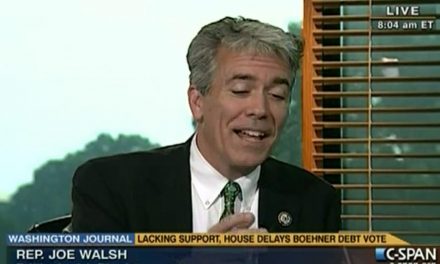In June 2017, I wrote a feature piece for the Washington Monthly called “How to Win Rural Voters Without Losing Liberal Values.” It was a post-mortem on how Hillary Clinton managed to do better than Barack Obama in most suburban areas and still lose the 2016 presidential election to Donald Trump, and it focused most heavily on the results in my home state of Pennsylvania. I had a twofold diagnosis.
Most obviously, it was clear that Clinton’s campaign strategy, which focused on maximizing her support among affluent white professionals in places like Philadelphia’s ring counties, had worked quite well but was undermined by a massive cratering of support in small towns and rural areas where longtime Democrats and perennial non-voters had bought into what Trump was selling. On the surface, things may not have seemed so bad. After all, Clinton did win the national popular vote. But her support was not geographically distributed in a favorable way for the Democrats. It resulted in the party underperforming in congressional races and state legislative elections. Districts were too easily gerrymandered to the Republican Party’s advantage. And, probably most importantly, the Democratic strongholds had become an unnatural alliance between urban voters and the voters who had fled the cities to settle the suburbs. I feared that if the Democrats did not develop a strategy to win back a substantial amount of the rural and small town support they had lost in 2016, they’d discover that their urban/suburban coalition was susceptible to suburban defection based on traditional Republican messaging about crime, immigration, school quality, taxes, and state resources.
It concerned me that the Democrats were developing a strategy to win back the U.S. House of Representatives based almost entirely on winning suburban seats.
This strategy is rational if your primary focus is to pick up seats in the House of Representatives in 2018. Districts where Trump did the worst are the obvious low-hanging fruit. Those tend to be places like Georgia’s Sixth: metro areas with growing numbers of the “rising electorate” of college-educated professionals, single women, Millennials, immigrants, and other minorities who formed the core of the Obama coalition.
The strategy is highly questionable, however, if the goal is to win more broadly—say, the presidency in 2020.
The Democrats took back the House in 2018 and, in the end, President Trump’s performance in office completely assured that the well-educated suburbs would stick with the Democratic Party, support Joe Biden in 2020, and carry him into the White House. But Biden’s victory hid something troubling in both the House:
Leading up to the 2020 elections, the Democrats were projected by many polls to expand their majority by up to 15 seats due to the unpopularity of then-President Donald Trump. While Democrats ultimately retained control of the House following the 2020 elections, Republicans made a net gain of 14 seats…No Republican incumbent was defeated for re-election, while 13 incumbent Democrats were ousted by Republicans; also, several successful Democratic candidates won by smaller-than-expected margins.
And the Senate:
Democrats unseated four Republicans – in Arizona, in Colorado, and in two elections in Georgia – while Republicans flipped a seat in Alabama. However, Democrats under-performed expectations overall; despite record-breaking turnout and fund-raising efforts, they failed to flip several seats that were considered competitive, and lost many races by much larger margins than expected.
In the 2022 midterms, losses in suburban New York cost the Democrats the House and the suburban/urban coalition wasn’t strong enough to carry winnable Senate seats in Wisconsin, Ohio, and North Carolina.
My second 2016 post-mortem diagnosis pertained to what to do about the massive loss of small town and rural support. My main focus, now shared by people like newly elected Iowa State Rep. J.D. Scholten, was on addressing the consolidation of the rural economy by monopolies which were also stifling traditional entrepreneurial opportunities in our small town communities.
People in rural and small-town America know the dangers of industry consolidation better than anyone, having seen it strip away the livelihoods of independent farmers and local banks and merchants long before most city slickers even realized that corporate concentration was an issue.
This was a way to fix what is really ailing these communities, and it didn’t depend on adopting Republican messaging on crime, immigration, religion, human sexuality or race. And the idea was not that this would turn deep red Trump counties blue, but that going into these communities with a relevant economic message could trim the Republican Party’s growing advantages down to a manageable level.
Now, early on the 2022 midterm cycle, I pointed to John Fetterman as the type of candidate who could accomplish what I envisioned. Unfortunately, we’ll never know how he would have performed if had not suffered a serious stroke on the eve of the primary election, but I think we can all agree his victory would have been larger if he hadn’t been knocked off the campaign trail with a concerning health issue. I believe he likely would have run ahead of Josh Shapiro, the Democrats’ successful gubernatorial candidate, rather than significantly behind him. In any case, he was the sole Democratic Senate candidate to flip a previously Republican-held seat in the midterms. Now the New York Times asks:
Did John Fetterman just show Democrats how to solve their white-working-class problem?
Mr. Fetterman’s decisive victory in Pennsylvania’s Senate race — arguably Democrats’ biggest win of the midterms, flipping a Republican-held seat — was achieved in no small part because he did significantly better in counties dominated by white working-class voters compared with Joseph R. Biden Jr. in 2020.
These voters for years have been thought to be all but lost to Democrats, ever since Donald J. Trump turned out explosively high numbers of white voters in rural and exurban counties, especially in Pennsylvania and the northern Midwest.
The winning formula was also noted by John Nichols of The Nation:
Fetterman’s margin was built with strong showings in the historically Democratic cities of Philadelphia and Pittsburgh. But what gave him that wide margin of victory, after an intense, expensive, and at times bitter contest with Republican Mehmet Oz, was a steadily stronger-than-expected showing in the smaller cities, towns, and rural areas of Pennsylvania.
In his victory speech, Fetterman described his strategy which involved competing in every county in the commonwealth:
“We launched this campaign almost two years ago, and we had our slogan. It’s on every one of those signs right now: ‘Every county. Every vote,’” the candidate told an elated crowd in Pittsburgh. Supporters chanted, “Every county! Every vote!” “That’s exactly what happened,” said Fetterman. “We jammed them up. We held the line. I never expected that we were going to turn these red counties blue. But we did what we needed to do, and we had that conversation across every one of those counties. And tonight that’s why I’ll be the next US senator from Pennsylvania.”
I wouldn’t say that antitrust enforcement was a prominent part of Fetterman’s message, but anti-corporatism (with an emphasis on “corporate greed” and “price gouging”) certainly was, and it got through to just enough people to make a noticeable difference. The New York Times reports:
Mr. Fetterman’s biggest gains were in deep-red counties dominated by white working-class voters. He didn’t win these places outright, but he drove up the margins for a Democrat by 3, 4 or 5 points compared with Mr. Biden.
Considering that Fetterman replaces Pat Toomey, perhaps the most pro-monopolist member of the Senate, this can be considered a massive gain for rural and small-town voters even if they still voted heavily for Mehmet Oz. And it’s important to note that Fetterman accomplished this while being aggressively pro-choice, and so proudly pro-LGBTQ that he placed a trans-rights flag in his Lieutenant Governor’s office. He’s also undoubtedly the loudest and least apologetic advocate of marijuana legalization to ever run for U.S. Senate and has a strong record on clemency and commutations for violent criminals who have served long sentences. He didn’t run away from this record in order to win a few Trump voters. He won enough of them anyway.
One can argue about whether Fetterman is really representative of the white working class voter. His family had money and he has a master’s degree from Harvard University. On the other hand, he didn’t go work on Wall Street. He served as the mayor of hardscrabble Braddock, Pennsylvania, a rough and diverse suburb of Pittsburgh. He projects a working class attitude and sensibility through both his words and his wardrobe, and he never seems out of place in a room of union workers. His campaign’s focus on campaigning in every county brought him into contact with people and gave him a better understanding of their concerns.
All of these things, except perhaps the wardrobe, are things the Democrats should emulate, whether they’re looking to recruit candidates or they are the candidate themself. But it’s not something that can be faked. You want, ideally, a platform that Democrats from rural America can proudly and unapologetically run on, and Fetterman’s campaign is a strong step in that direction.
I concluded my 2017 Washington Monthly piece by writing:
Throwing out the defensive playbook for an offensive one offers the opportunity to cast aside stale assumptions on what positions a candidate has to adopt in order to be competitive.
Donald Trump taught us that. He could buck Republican ideology on trade and entitlements. He could win over evangelicals despite his notorious sexual behavior. He could even flip-flop on core issues like abortion and nationalized health care without it making a damn bit of difference. The lesson for Democrats may be that they can get away with being pro-choice in an anti-choice district, and pro-climate in a coal-extraction economy, but only if their economic message kicks the shit out of the message coming from the other side.
The progressive left should hope this theory is correct, because the alternative is to abandon these districts to right-wing extremists and continue getting steamrolled in elections from the presidential on down.
Fetterman ultimately decided that opposing fracking was a step too far, but aside from that he tested my theory and he showed that it can be wildly successful. I had faith he could do it, and that he pulled it off despite his health setback is both impressive and a further confirmation that it’s a workable strategy.







